We had solar panels installed on our flat roof on a London terraced home one year ago. The panels are attached to plastic tubs filled with ballast. During the daytime, we use the electricity as it’s generated, so we make sure we use the washing machine / charge phones / anything else we can think of during the day – plus it powers the fridge and anything else that’s on all the time. Any surplus is fed into the National Grid, and we get paid for it (4.7p per unit – compared to 14p per unit when we buy it back from the Grid, which seems a bit unfair, but that’s another story). But on top of this, there’s a government incentive to install solar called the feed-in tariff, which means that for every unit of electricity you generate, the government will pay you 14.3p – whether you use the electricity yourself or export it to the Grid. This is the key that makes solar electricity viable on the domestic scale. When you make a successful application for the feed-in tariff, you are guaranteed to receive it for 20 years, and it will rise with inflation.
Obviously I wanted to talk to our installer about how much electricity we would be likely to generate, and how long it would take for our system to pay for itself. So we sat down to do the sums.
There are various packages that you can use to estimate the amount of electricity that you will get out of your system, based on the area of panels you install, the orientation of your roof and the angle of inclination of your panels.
For example, here’s one on the website of our partners, the Centre for Alternative Technology:
http://info.cat.org.uk/solarcalculator
and here’s one from the Energy Saving Trust:
http://www.energysavingtrust.org.uk/Generating-energy/Getting-money-back/Solar-Energy-Calculator
Just enter your roof area, orientation and inclination, plus your geographical location and it will generate figures for the amount of electricity you can expect to generate.
Your analysis will look something like this (but obviously, the figures will apply to your property):

For a more detailed view, see here.
It contains estimates for the amount of electricity you can expect to generate each year, taking into consideration the slight annual decrease of efficiency; the rate of feed-in-tariff you can expect to get; how much you can expect to recieve for exporting electricity to the grid (see below); how much you will save by using the electricity generated; and from these figures, the expected payback time for your initial outlay (in the right-hand column, in this case you can see the colour changes from red to green after 9 years).
So according to this chart, in the first year, our system was expected to generate 1,848 KWh of electricity, receiving £265 from the feed-in tariff, £44 from exporting electricity to the grid and £129 in savings for not having to pay for electricity that we generate ourselves. That’s a total of £439 in the first year, which accumulates each year, and crosses the £5000 barrier (the cost of the system) in year 10. After that we should be in profit. And even if we didn’t have the money up front, taking out a loan to do it would have added just 2 years to the payback time.

Our inverter, installed near our front door. You can have it wherever you want, but we wanted people to see it.
So much for the predictions – how did we do in reality?
We have an inverter near the front door that collects all the generation figures from the system. I have to read them off and send them to our electricity supplier every quarter (they remind us). By the end of June (one year after installation) we’d generated almost 1,800kWh, so slightly less than the prediction, but still very good, and on track for a 10-year payback time.
So our recommendation is – do it! It makes financial sense, it means that your electricity comes from the sun rather than fossil fuels, and it means that you’re taking electricity generation away from the corporate sector.
I’ll give a little plug to our installer, Norman of Assured Solar – because he did a good job for us, and because he’s using some of his profits to set up cottage industries in parts of Africa to provide small solar systems for lighting in villages. See here for more information on that, and here’s his promotional video.

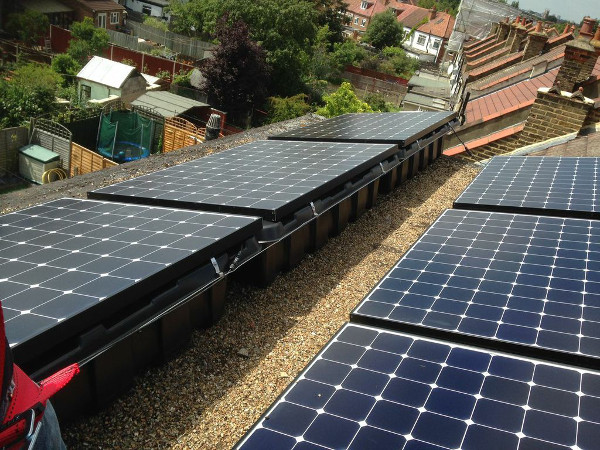
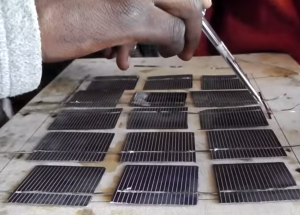
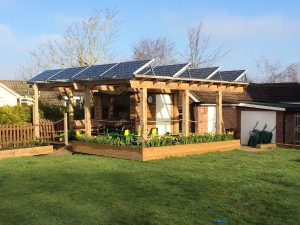
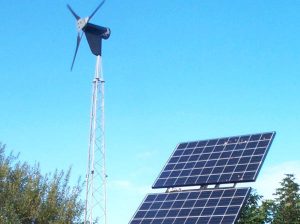
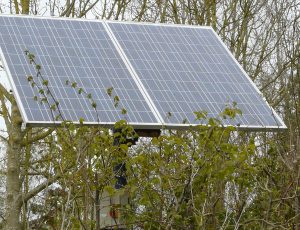

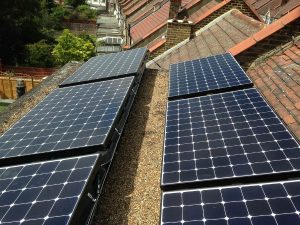
6 Comments
We installed our solar power just before the government started reducing the FIT. It cost £8,500 (probably £5K today) and its peak output is 3.6Kw. We live in the wettest part of Britain, Snowdonia.
The results are
Year 1: 3480 Kwh
Year 2: 3693 Kwh
Year 3: 3431 Kwh
Inflation adjusted it is making £1700 a year plus the reduction in our electricity use, about £300 pa
We expect to have to replace the inverter at some point but ignoring that it’s a 20% ROI.
So financially it was a wonderful investment. Great for the middle class home-owners with some disposable savings in a period of low interest rates. Not much use for those struggling to meet a mortgage or renting. Yes, I feel a bit guilty.
The real question is ‘Does solar PV make sense ecologically in areas like ours?’ I don’t know but I suspect not. That’s a very complex question. Would a subsidy on LED lights paid for with a tax on halogen and incandescent bulbs given more ‘bang for the buck’? Improving the housing stock insulation to reduce energy consumption?
Wow, so you’re well on the way to having paid for your system already – with probably another 20 years in profit?
Don’t feel guilty – what would you prefer, to continue getting your electricity from fossil fuels or nuclear? Generating your electricity without contributing to carbon emissions or nuclear waste is doing us all a favour.
But if you still feel guilty, offer to pay for an installation for someone as long as they sign the FiT over to you.
I wish we’d spoken to a few banks, or maybe even a credit union, to see if they would have offered us credit for a system if I’d shown them the figures. I could still do it I suppose, and pretend we don’t have a system.
Why do you question whether it makes ecological sense? The energy payback time is around 5ish years – http://www.resilience.org/stories/2006-06-16/energy-payback-roof-mounted-photovoltaic-cells.
I mean, definitely do those other things as well, but it’s a wonderful thing to be able to wrest control of our energy supply away from the corporate sector, even just a tiny bit.
I feel a lot less guilty having read that link, thank you, – I’d heard that solar PV didn’t recoup the embedded energy of production.
I think it’s a given that we need to aim for zero carbon emissions asap or face disaster. That means renewable sources or nuclear which is both expensive and potentially another sort of disaster. Solar and wind have the innate problem of being variable and intermittent but can make a much bigger contribution than they do now.
What I don’t understand is why there has been so little use of tidal and wave power to date. The new tidal lagoon at Swansea is just a start. Tidal power is totally predictable, if still variable. Provision of many wave power generators would balance each other and provide a consistent base load production. Surely investing in R&D on these technologies would be a good use of government monies.
The problem I have with some technologies is not that they’re unsustainable, it’s that they can only be corporate-owned. Nuclear certainly falls into that category, as does GM. I don’t want more of our energy and food supply being owned and controlled by the corporate sector. I’m not sure about tidal – whether it can be community-owned. Otherwise, as you say, the R&D will be paid for by the taxpayer and the profits will be made by the corporate sector.
Don’t forget that nuclear power was owned by that state – remember the CEGB? I’d say I put the planet before politics but my real bottom line objection to GM crops is the corporate control. I’m not a well educated person, to me things make less and less sense. If we need private investment to pay for infrastructure OK, but then the bank is printing money which it gives to the banks… couldn’t the government use that qualitative easing to pay for infrastructure? Create jobs and capital for the people.
I don’t think that governments are the seat of power, ultimately. They do as they’re told, and they’ve seen what happens to governments that don’t – worst case Saddam, best case Syriza. They’ll only be allowed to run things that don’t make money, or even then the corporate sector could run it with subsidies from taxpayers.